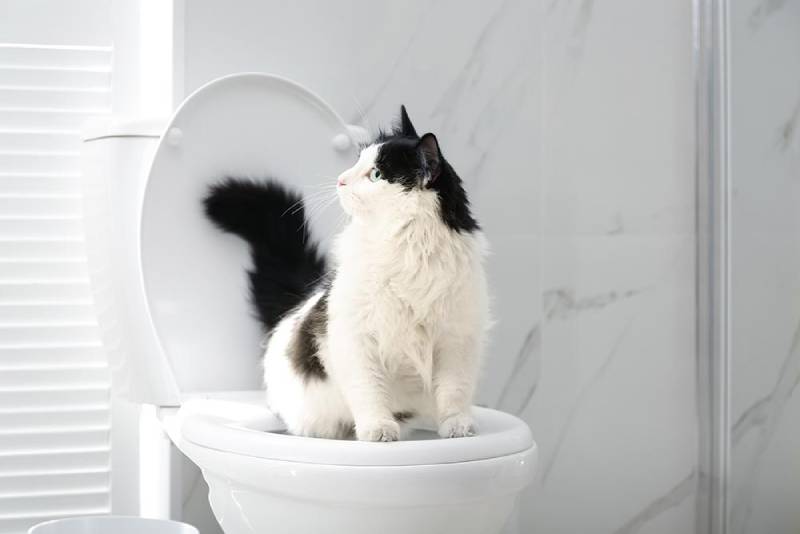Avoid Flush Cat Poop Down Your Toilet - Safeguard Your Plumbing Infrastructure
Avoid Flush Cat Poop Down Your Toilet - Safeguard Your Plumbing Infrastructure
Blog Article
Here down the page you can get a lot of amazing advice involving Can You Flush Cat Poop Down The Toilet?.

Intro
As feline owners, it's important to bear in mind how we throw away our feline pals' waste. While it may appear convenient to flush pet cat poop down the bathroom, this practice can have destructive repercussions for both the setting and human wellness.
Alternatives to Flushing
Thankfully, there are more secure and more accountable means to dispose of cat poop. Think about the following choices:
1. Scoop and Dispose in Trash
The most usual method of taking care of pet cat poop is to scoop it right into an eco-friendly bag and toss it in the trash. Be sure to use a devoted trash scoop and deal with the waste quickly.
2. Use Biodegradable Litter
Choose biodegradable feline litter made from materials such as corn or wheat. These litters are environmentally friendly and can be safely disposed of in the trash.
3. Bury in the Yard
If you have a lawn, think about burying cat waste in a marked location far from veggie yards and water sources. Make sure to dig deep sufficient to avoid contamination of groundwater.
4. Install a Pet Waste Disposal System
Invest in a pet garbage disposal system especially made for feline waste. These systems use enzymes to break down the waste, lowering smell and environmental impact.
Wellness Risks
In addition to environmental worries, purging feline waste can likewise present wellness risks to people. Pet cat feces may contain Toxoplasma gondii, a bloodsucker that can create toxoplasmosis-- a possibly serious illness, specifically for expecting ladies and people with damaged immune systems.
Environmental Impact
Purging feline poop introduces dangerous pathogens and parasites right into the supply of water, posing a considerable risk to water ecological communities. These pollutants can adversely affect aquatic life and concession water quality.
Verdict
Responsible animal ownership expands beyond supplying food and shelter-- it additionally includes proper waste administration. By refraining from purging cat poop down the bathroom and opting for different disposal approaches, we can reduce our environmental footprint and safeguard human health.
Why Can’t I Flush Cat Poop?
It Spreads a Parasite
Cats are frequently infected with a parasite called toxoplasma gondii. The parasite causes an infection called toxoplasmosis. It is usually harmless to cats. The parasite only uses cat poop as a host for its eggs. Otherwise, the cat’s immune system usually keeps the infection at low enough levels to maintain its own health. But it does not stop the develop of eggs. These eggs are tiny and surprisingly tough. They may survive for a year before they begin to grow. But that’s the problem.
Our wastewater system is not designed to deal with toxoplasmosis eggs. Instead, most eggs will flush from your toilet into sewers and wastewater management plants. After the sewage is treated for many other harmful things in it, it is typically released into local rivers, lakes, or oceans. Here, the toxoplasmosis eggs can find new hosts, including starfish, crabs, otters, and many other wildlife. For many, this is a significant risk to their health. Toxoplasmosis can also end up infecting water sources that are important for agriculture, which means our deer, pigs, and sheep can get infected too.
Is There Risk to Humans?
There can be a risk to human life from flushing cat poop down the toilet. If you do so, the parasites from your cat’s poop can end up in shellfish, game animals, or livestock. If this meat is then served raw or undercooked, the people who eat it can get sick.
In fact, according to the CDC, 40 million people in the United States are infected with toxoplasma gondii. They get it from exposure to infected seafood, or from some kind of cat poop contamination, like drinking from a stream that is contaminated or touching anything that has come into contact with cat poop. That includes just cleaning a cat litter box.
Most people who get infected with these parasites will not develop any symptoms. However, for pregnant women or for those with compromised immune systems, the parasite can cause severe health problems.
How to Handle Cat Poop
The best way to handle cat poop is actually to clean the box more often. The eggs that the parasite sheds will not become active until one to five days after the cat poops. That means that if you clean daily, you’re much less likely to come into direct contact with infectious eggs.
That said, always dispose of cat poop in the garbage and not down the toilet. Wash your hands before and after you clean the litter box, and bring the bag of poop right outside to your garbage bins.
https://trenchlesssolutionsusa.com/why-cant-i-flush-cat-poop/

We had been made aware of that article about Can You Flush Cat Poo or Litter Down the Toilet? through a friend on another web address. If you please take the time to promote this blog if you appreciated it. Thank-you for going through it.
Start Now Report this page